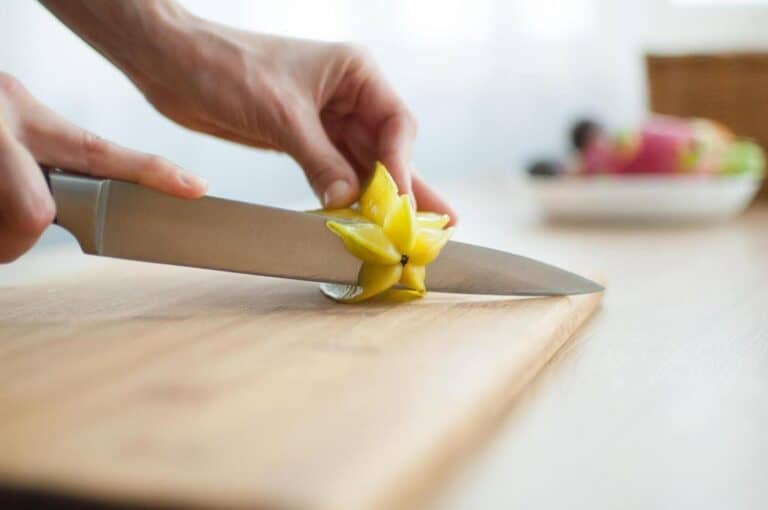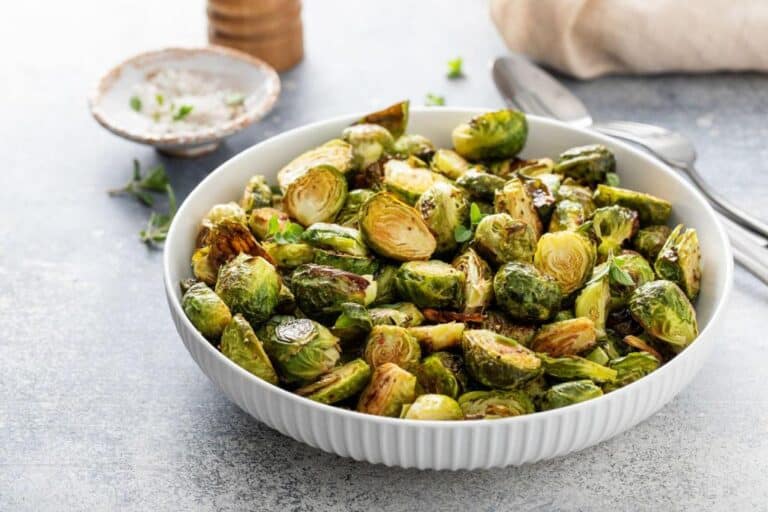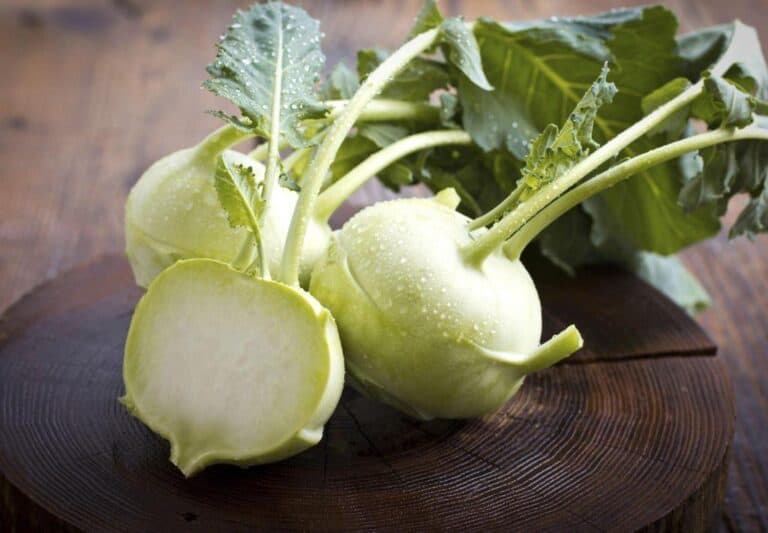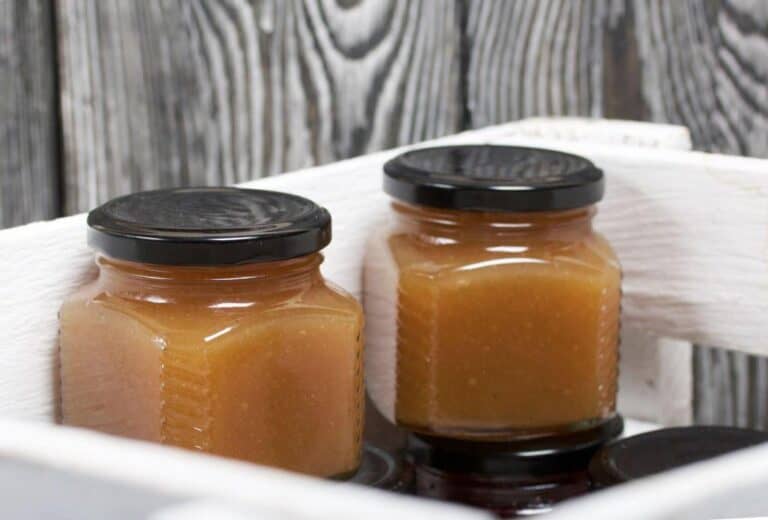Slimy Mushrooms: Are They Bad Or Still Safe to Eat?

Mushrooms, despite not being classified as plants, occupy a captivating realm within the natural world. They come in an astounding array of shapes, sizes, and colors, making them a subject of wonder and curiosity for many. While some are cherished for their culinary appeal, others can pose health risks if consumed.
Slimy mushrooms, with their unique texture and appearance, can be both intriguing and perplexing. People who like to hunt for food and cook often wonder if these slippery fungi are safe to eat or should be left alone.
In this article, we’ll dive into the world of slimy mushrooms, exploring their identification and potential risks. At the end of the article, you will understand of to make informed decisions when encountering them in nature.
Identifying Slimy Mushrooms
Before you consider incorporating slimy mushrooms into your meals, it’s important to identify slimy mushrooms correctly. Not all slimy mushrooms are hazardous, but not all are edible either.
Let’s delve into the key characteristics to look for when identifying these intriguing fungi:
| Characteristic | Description |
| Cap Texture | Slimy mushrooms often feature a slippery or slimy cap surface. |
| Gill Color | Examine the color of the gills beneath the cap. |
| Stem Features | Pay attention to the shape, size, and color of the stem. |
| Habitat | Note the environment where you found the mushroom. |
| Spore Print | Collecting a spore print can aid in accurate identification. |
The Significance of Sliminess in Mushrooms Varieties
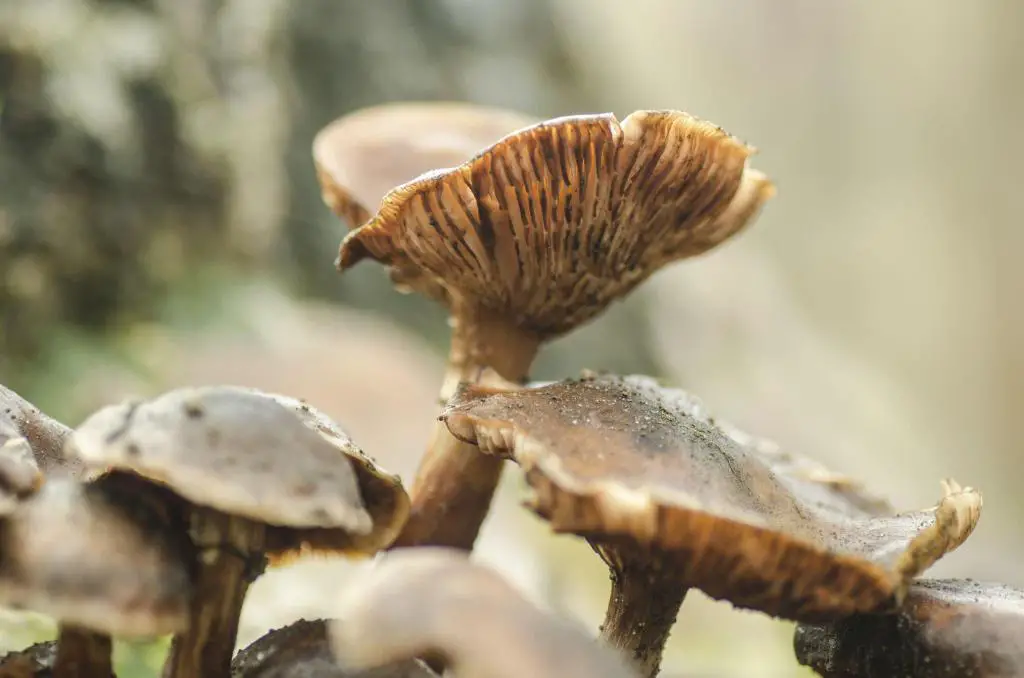
Sliminess in mushrooms can serve as an indicator that the fungi are aging and, in most cases, less suitable for consumption. While it’s not an immediate sign of spoilage, it does indicate that the mushrooms are on their way there.
So, how can you determine whether your slimy mushrooms are still safe to eat? The key lies in examining their overall condition, the type of mushroom, and the presence of other spoilage signs.
Below is a table outlining some common types of edible mushrooms and how to assess their safety when they turn slimy:
| Mushroom Type | Sliminess Assessment |
| Button Mushrooms | Slimy texture is a strong indicator of spoilage. Discard them if they appear slimy. |
| Portobello Mushrooms | Sliminess is a sign of aging, but that doesn’t necessarily mean they are spoiled. Check for other spoilage signs. |
| Shiitake Mushrooms | Slimy texture is a clear sign of spoilage. Discard them if they appear slimy. |
| Oyster Mushrooms | Sliminess can indicate aging but doesn’t necessarily mean spoilage. Check for other spoilage signs. |
| Morel Mushrooms | Sliminess is unusual for morels; discard them if they appear slimy. |
| Chanterelle Mushrooms | Slimy texture is a clear sign of spoilage. Discard them if they appear slimy. |
It’s important to note that while sliminess is a strong indicator of spoilage for some mushrooms, it may not be definitive for others. When in doubt, trust your senses and use other spoilage signs as a reference.
What Makes Mushrooms Slimy?
Before we dive into the safety of eating slimy mushrooms, let’s first understand why mushrooms turn slimy in the first place. The sliminess of mushrooms is primarily attributed to a few causes.
1. Bacteria and Mold Growth
Mushrooms are susceptible to bacterial and mold growth, especially if they are not stored properly. When exposed to moisture and warm temperatures, bacteria and mold can quickly multiply. This will cause the mushrooms to become slimy.
2. Spoilage
Mushrooms can spoil if they are not used within a certain timeframe. As they age, they can become slimy and develop an unpleasant odor.
3. High Humidity
Mushrooms thrive in a cool, dry environment. If they are exposed to high humidity, they can absorb moisture and become slimy.
Related: Does Washing Mushrooms Make Them Slimy When Wet?
Slimmy Mushrooms Dilemma: Edible vs. Toxic Slimy Mushrooms
Now that you know how to spot slimy mushrooms, let us start with the most important question: Are slimy mushrooms safe to eat?
Edible Slimy Mushrooms:
Some slimy mushrooms, such as the Slippery Jack (Suillus luteus), naturally have a slimy cap. With proper preparation and cooking, these can be perfectly safe to consume.
Toxic Slimy Mushrooms:
However, there are also toxic mushrooms with slimy features, like the notorious Death Cap (Amanita phalloides). Ingesting these can lead to severe illness or even death.
The Risks of Consuming Slimy Mushrooms
Consuming slimy mushrooms without accurate identification can be risky. Even experienced foragers can make mistakes, so it’s essential to exercise caution. The consequences of ingesting toxic mushrooms can be severe and, in some cases, life-threatening. Here are some potential risks:
Gastrointestinal Distress:
Many toxic mushrooms can cause nausea, vomiting, and diarrhea, leading to severe discomfort and dehydration.
Organ Damage:
Certain poisonous mushrooms can harm vital organs, such as the liver and kidneys, potentially resulting in long-term health issues.
Neurological Symptoms:
Toxic mushrooms may lead to neurological symptoms, including confusion, hallucinations, and seizures.
Are There Any Safe Ways to Eat Slimy Mushrooms?
Slimy mushrooms, often a source of culinary confusion, can be safely consumed when handled and prepared correctly. While their slippery texture might initially raise concerns, various cooking techniques can transform these seemingly unappealing fungi into delectable dishes.
- Sauteing slimy mushrooms with aromatic herbs and spices can help reduce their sliminess while enhancing their natural flavors.
- Additionally, grilling or roasting them at high temperatures can create a delightful caramelization, adding depth and complexity to their taste profile.
- Incorporating slimy mushrooms into soups or stews can also be a safe and enjoyable way to savor their unique texture, as the extended cooking time can soften their sliminess, resulting in a rich and flavorful broth.
- Furthermore, pickling or fermenting slimy mushrooms can offer a tangy and savory twist, providing a delightful accompaniment to various dishes, from salads to sandwiches.
By exploring these safe and innovative cooking methods, you can elevate the culinary appeal of slimy mushrooms and discover a whole new world of gastronomic possibilities.
Naturally Slimy Mushrooms You Can Eat
There are indeed edible mushrooms that have a naturally slimy texture, and they’re a unique culinary delight. Two such mushrooms, known as Wood Ear and Jew’s Ear, are safe to eat. Thye are often featured in various Asian dishes and bring an intriguing element of taste and texture to the table.
1. Wood Ear (Auricularia auricula-judae):
Texture: Wood Ear mushrooms are aptly named for their ear-like appearance and smooth, slightly slimy texture.
Color: They are typically dark brown to black, resembling an ear shape.
Usage: These mushrooms are a popular ingredient in Chinese and other Asian cuisines, prized for their ability to absorb flavors in soups, stir-fries, and salads.
2. Jew’s Ear (Auricularia polytricha):
Texture: Jew’s Ear mushrooms are also known for their slimy, ear-like appearance and slightly crunchy texture.
Color: They are often a dark brown or black color.
Usage: These mushrooms are a common addition to dishes like hot and sour soup, stir-fries, and noodle dishes in Asian cooking.
3. Enoki Mushrooms (Flammulina velutipes):
Appearance: Delicate and slender with long, thread-like stems and tiny caps.
Texture: Enoki mushrooms have a slight sliminess, giving them a unique crunch and silkiness when cooked.
Culinary Uses: They are excellent for salads, soups, and stir-fries, adding a mild, nutty flavor.
While these mushrooms may have a naturally slimy feel, they add a unique element to dishes. They are, providing a contrast in texture and a great capacity to absorb the flavors they’re cooked with. When properly prepared, these slimy mushrooms can be a delectable addition to your culinary repertoire.
So don’t let their sliminess deter you; instead, appreciate their distinctive qualities and enjoy the richness they add to your favorite Asian dishes.
Signs of Mushroom Spoilage
Aside from sliminess, there are other telltale signs of mushroom spoilage that you should be aware of. These signs can help you make an informed decision about whether to consume or discard your mushrooms. Common spoilage indicators include:
- Off Odor: If your mushrooms emit a foul, pungent, or unusual odor, it’s a clear sign that they are no longer suitable for consumption.
- Discoloration: Mushrooms that have developed strange discolorations, such as dark spots or a brownish hue, are likely past their prime.
- Slimy Caps: In addition to overall sliminess, pay attention to the caps of mushrooms. If they are excessively slimy, they should be discarded.
- Mold Growth: The presence of mold in the mushrroms, a fuzzy or fuzzy-like substance on the mushrooms, is a definite sign of spoilage.
- Texture Changes: When mushrooms become mushy or excessively soft, it’s a strong indication that they have started to deteriorate.
- Wrinkled Appearance: Mushrooms that have become wrinkled, shriveled, or have lost their tautness are no longer fresh.
Mushroom Safety Guidelines
To ensure your safety when foraging for mushrooms, especially slimy ones, follow these essential guidelines:
- Educate Yourself: Invest time in learning about mushroom identification. Books, online resources, and local mycological clubs can provide valuable information.
- Consult Experts: When in doubt, consult experienced mushroom foragers or mycologists who can offer guidance.
- Avoid Solely Relying on Appearance: Keep in mind that some edible mushrooms can resemble toxic species. Never rely solely on visual cues for identification.
- Collect Spore Prints: Taking spore prints can be a helpful step in identifying mushrooms accurately.
- Cook Thoroughly: Always cook mushrooms before consumption. Heat can neutralize some toxins, making the mushroom safe to eat.
Conclusion
In the enchanting world of mushrooms, slimy varieties offer a unique allure. While some slimy mushrooms can be delightful when prepared correctly, others pose significant risks to your health. The key to enjoying slimy mushrooms is knowledge and cautious identification.
The next time you encounter a slimy mushroom, take a moment to assess its characteristics. Remember the safety guidelines outlined in this article. By doing so, you can relish the wonders of edible, slimy mushrooms while shielding yourself from the dangers of toxic ones. Stay informed, stay safe, and continue to explore the captivating world of fungi.
Slimy mushrooms may be enigmatic, but with the right knowledge, they can be a part of your culinary adventure without causing harm.
FAQs on Slimy Mushrooms: Are They Bad Or Still Safe to Eat?
Why do some mushrooms become slimy?
Some mushrooms become slimy due to high moisture, allowing bacteria and fungi to grow. This often happens when mushrooms are stored in damp conditions or for too long.
How can you tell if mushrooms are still safe to eat when they’re slimy?
To determine if mushrooms are safe, check for a foul odor, unusual discoloration, or excessive slime. Their firm texture and absence of pungent smells indicate they are still edible.
What is the best way to store mushrooms to avoid sliminess?
Store mushrooms in a paper bag or a dry container in the refrigerator. Avoid plastic bags, which can trap moisture and accelerate sliminess. Use them within a few days for optimal freshness.
Are all slimy mushrooms unsafe to eat?
Not all slimy mushrooms are unsafe; some naturally slimy mushrooms can be consumed without harm. However, caution is necessary, as some sliminess can indicate spoilage and potential health risks.
What are the health risks associated with consuming slimy mushrooms?
Health risks associated with consuming slimy mushrooms include food poisoning, allergic reactions, and gastrointestinal distress. Consuming spoiled mushrooms can lead to severe symptoms and complications.
How can one distinguish between naturally slimy mushrooms and spoiled ones?
Naturally slimy mushrooms have a distinct texture and aroma, whereas spoiled ones have a foul odor and abnormal discoloration. Sliminess in fresh mushrooms is natural, while spoilage presents additional signs of decay.
Can cooking eliminate the sliminess in mushrooms?
Cooking can help reduce the sliminess of mushrooms by evaporating excess moisture. Sautéing, grilling, or baking can improve their texture and enhance their overall flavor.
What are some alternative uses for slimy mushrooms besides cooking?
Besides cooking, slimy mushrooms can be utilized for composting due to their organic matter. Additionally, they can be used in skincare products for their moisturizing and nourishing properties.

